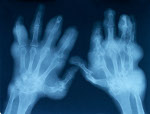What is Arthritis?
Author: John Published Under: Health

The understanding and treatment of arthritis has come a long way in the last fifty years. Once, it was thought that arthritis was a single disease, but it is now known that there are more than 100 different types of arthritis.
The exact causes of arthritis are not known for sure, however studies have found some similar risk factors, such as genetics, obesity, and infections. The way arthritis is diagnosed and treated, though, has been greatly improved.
It is very important to understand that arthritis is not a single disease, but is instead made up of a number of different types of disorders. However, a common symptom of arthritis is joint pain and discomfort, which is caused as the joints become inflamed. This joint inflammation causes swelling and tenderness.
Classifying the Different Types of Arthritis
There are several ways that arthritis can be characterized, but it is often classified as either inflammatory arthritis or degenerative arthritis, with some showing symptoms of both categories.
Inflammatory arthritis is characterized by excessive swelling and stiffness of the soft tissue that surrounds the joint, with one example of inflammatory arthritis being rheumatoid arthritis. Usually the joint pain and stiffness associated with inflammatory arthritis is worst in the mornings, sometimes lasting for more than an hour.
Degenerative arthritis, of which osteoarthritis is one common type, does not cause as much soft tissue damage an instead is more likely to cause bony swelling. The effects of degenerative arthritis are most commonly found after exercise, although it also occurs when at rest.
In addition to being classified as degenerative or inflammatory, the number of joints that are affected is also used to describe the arthritis. Monoarthritis is when only a single joint is affected by arthritis. Polyartrtitis is use to describe when many joints are affected by the arthritis. When more than one joint is affected, but not a large number, it is sometimes referred to as oligoarthritis.
Arthritis can also be classified as symmetrical or asymmetrical. In symmetrical arthritis, similar joints are affected on both sides of the body. So, for instance, both knees would be affected by the arthritis. Asymmetrical Arthritis, on the other hand only affects a single joint, without affecting the one on the other side of the body.
What Joints Are Commonly Affected By Arthritis?
While arthritis can litterally affect any joint in the body, it most commonly affects the smaller joints, like those in the hands an feet, as well as the knees and hips. The different types of arthritis affect different joints and in different manners.
For example, osteoarthritis usually affects the knees, hips and the top two joints in the finger, as well as the bottom joint in the thumb. Rheumatoid Arthritis, on the other hand, usually affects the opposite joints in the hand, the bottom two joints in the finger and thumb, as well as the wrists. Gout, another type of arthritis, is most commonly found in the large toe.